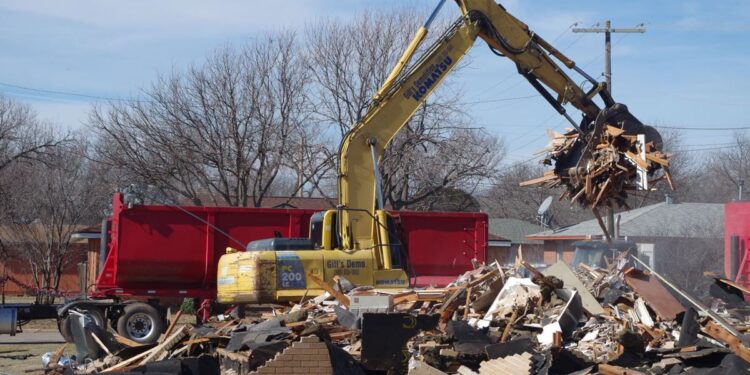Lawton — city and citizens — has needs and the only way to address them is through a new extension of the city’s Capital Improvements Program.
That’s the argument the City Council is weighing as members continue public discussions of an idea officials have been exploring for months: extending the existing CIP through 2040 will fund projects ranging from crime-fighting technology and facilities for sexual assault victims, to upgrades of the city’s historic structures, parks and streets. In between comes projects such as more outreach programs for at-risk youth and a permanent youth arts program that could be housed in the historic Carnegie Library Town Hall.
“There’s no money to address these things,” said Mayor Stan Booker, who started the ball rolling on public discussions two weeks ago on what he and others are calling Propel 2040.
Some proposals are familiar and have a proven track record in other CIPs.
Topping the list is public infrastructure, most notably, streets. Booker said the bulk of funding for upgrades to West Lee Boulevard and planned upgrades in the west industrial park (rebuilding Goodyear Boulevard and building a new bypass) are receiving the majority of their construction funds from federal and state funds. But grants typically come with local matching requirements, and existing CIPs have provided that money. Booker said the projects are critical industrial roads that wouldn’t have been possible without planning. And, planning means identifying the city’s local funding — the CIP.
It’s part of the reason Booker supports the idea of creating a permanent one-quarter-cent sales tax dedicated to streets. In addition to providing grant matches, CIP money could be coupled with plans to dedicate more revenue in annual streets budgets for repairs, Booker and City Council members said, pointing to projects such as the successful mill and overlay program. Ward 4 Councilman George Gill said it just makes sense and easily fits into other projects planned for the CIP extension.
“It takes good roads to get there,” Gill said.
It’s a variation of the argument Booker uses to propose another quarter-cent designation, one dedicated to parks.
“We need to keep investing in parks,” he said, adding a dedicated revenue stream expected to generate $4.2 million annually will allow the city’s Parks and Recreation Department staff to make long-range plans for upgrades and new amenities.
Booker also likes the idea of adding new sports fields, as well as ensuring that plans to build an indoor youth sports complex move forward. While the existing CIP extension designates an amount “not to exceed $8 million,” Booker proposes removing that “not to exceed” limitation because $8 million won’t be enough.
Council members also support the idea of new fencing along the back (east side) of Highland Cemetery on Fort Sill Boulevard.
Ward 2 Councilman Kelly Harris said there are holes in the back fence, cut by residents who want a shortcut to a store on Fort Sill Boulevard. As soon as a hole is repaired “they cut a new one,” Harris said, adding the problem extends beyond damaged fencing. Those walking through the cemetery are buying beer and food, then stopping in the cemetery to drink and eat, then throw their trash among the tombstones. Harris’ solution is a wrought iron fence that can’t be cut.
A higher priority for Harris is public safety upgrades. They would include modernizing body cameras worn by police officers, while also adding hardware and software for things such as readers that automatically record the tag number of a vehicle being stopped or chased. Another program would allow residents with security cameras to participate in a program that allows city police to automatically download video when seeking information on crimes.
Booker said some proposed projects focus on work needed to preserve historic structures.
“We have to take care of these community treasures,” Booker said.
While the city already has a cost for work to repair damage caused by years of water leaks at Museum of the Great Plains ($6 million), officials also are looking at buildings such as Carnegie Library Town Hall, a structure built in the early 1900s as part of the effort by industrialist Andrew Carnegie and now suffering the effects of years of neglect and water damage.
“I’d love for it to be a youth arts center,” Booker said, explaining that ties into another proposed project he strongly supports: an expanded youth arts program.
He said Arts for All, which handled last summer’s successful arts program, is housed in Carnegie Library and he likes the idea of giving the arts program a permanent home there. That, in turn, fits into his continued emphasis on programs that support youth.
“Kids involved in the arts have a higher graduation rate,” he said, adding art programs are a good way to keep youth in school and out of the legal system.
And that fits into funding already designed in the existing CIP for programs aimed at at-risk youth, a funding emphasis that will continue. And there could be funding to reinstate a program founded by the late Councilman Stanley Haywood: funding to pay youth for summer jobs.
Ward 8 Councilman Randy Warren has his eye on the sky when suggesting it’s time to upgrade the city’s storm sirens. His idea is a system similar to the one the City of Norman uses, sirens loud enough “to rattle your teeth,” saying it doesn’t make sense to add more sirens that can’t be heard inside structures.
Want to reach a local audience and grow your business?
Our website is the perfect platform to connect with engaged readers in your local area.
Whether you're looking for banner ads, sponsored content, or custom promotions, we can tailor a package to meet your needs.
Contact us today to learn more about advertising opportunities!
CONTACT US NOW





